'Toy Story 4' producer addresses the existential crisis created by new character Forky
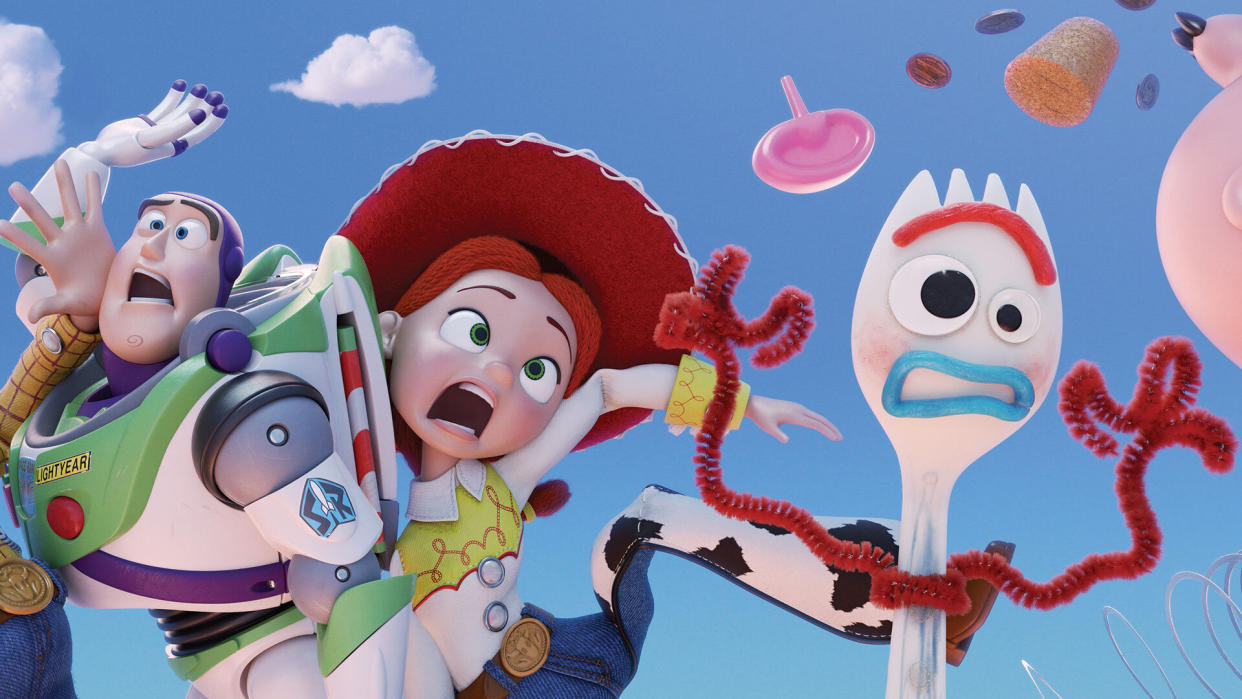
Woody, Buzz, Jessie and the gang return this summer in Toy Story 4, the long-awaited follow up to 2010’s Toy Story 3.
As with each new instalment in the long-running Pixar series before it, the fourth film introduces a whole bunch of new characters to disrupt the lives of the key players. Toy Story 2 brought in Jessie and Bullseye, who were followed by Bonnie’s toys like Mr Pricklepants and Trixie in Toy Story 3. However Toy Story 4 introduces a new player that threatens to destroy the very fabric of the Toy Story world: Forky.
Jonas Rivera, the film’s producer, admits the new character - voiced by Veep’s Tony Hale - is “a wrench thrown into the works of the Toy Story universe”.
“It's one of those things that - if you think about it - you unravel it too deep.”
So what is so devastatingly different about Forky? And why does the potential to be a franchise-upending plot hole?
Toy Story 4 picks up the story of Andy’s toys as they start to become accustomed to the world of Bonnie, their new owner, who was gifted the toys at the end of Toy Story 3 when Andy set off for college.
During a toy-free settling-in session at her new kindergarten, Bonnie builds Forky using an old plastic fork and some arts and crafts material. When Bonnie returns home with Forky in her bag, he comes to life much to the surprise of the other toys in Bonnie’s room.
Read more: Pixar’s upcoming films are ‘insane’
Bonnie’s love for the toy has seemingly willed Forky into life, so what was once trash is now alive and sentient (within the context of the Toy Story world). So does this mean *anything* can be a toy?
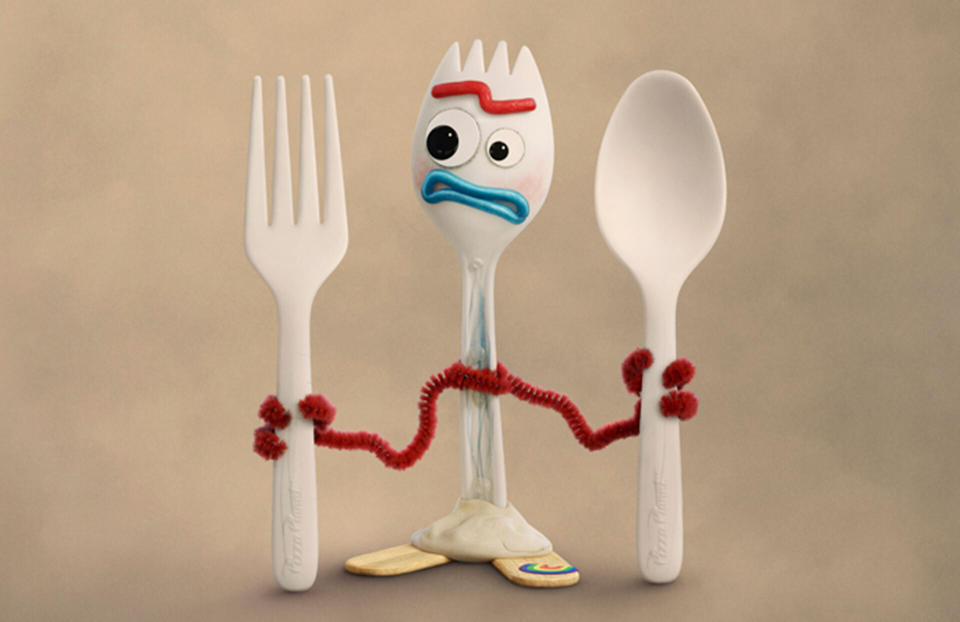
And, if it’s a child’s love that gives a toy life, how come the toys on the shelves of Al’s Toy Barn in Toy Story 2 were alive before they were purchased? This is the kind of stuff that keeps us awake at night, and Rivera admits they wrestled with it a lot at Pixar too.
“We have! Be careful, it's a deep hole,” laughs the Pixar creative. “When we came up with Forky, it was just something that made us laugh. And then we started having this very conversation like, ‘well, how does it work?’ ‘What's the firing order here in the order of operations?’
And we usually come around to: ‘I don't know, if it's funny, we'll just figure it out.’ You know, maybe the audience will accept it.”
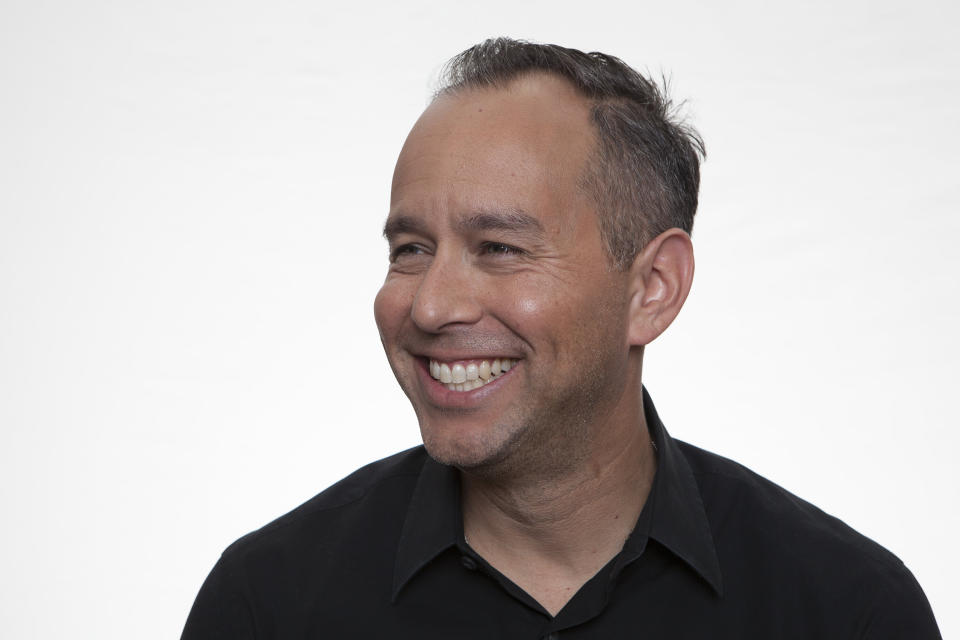
And, thankfully, Forky is scene-stealingly funny. The wide-eyed newcomer is clearly uncomfortable with his new-found sentience, and spends his first few hours simply trying to return to the trash from whence he came.
This potentially stretches the idea that toys know they have to freeze around humans to its breaking point, but Rivera is keen to gloss over it for the sake of its entertainment value.
Read more: The late Don Rickles still voicing Mr Potato Head
“I think that the idea is that what really gives a toy life is when a child loves them, right? So when [Bonnie] writes her name on him, that's kind of our Frosty the Snowman’s hat, you know, which for some reason brings you to life, that's our rules. So we establish it that way.”
“But you see it shocks Woody, right? So Woody’s never seen this, this is a new thing. And by design, he’s just a wrench thrown into the works of the Toy Story universe, where it's one of those things that if you think about it, you unravel it too deep.”
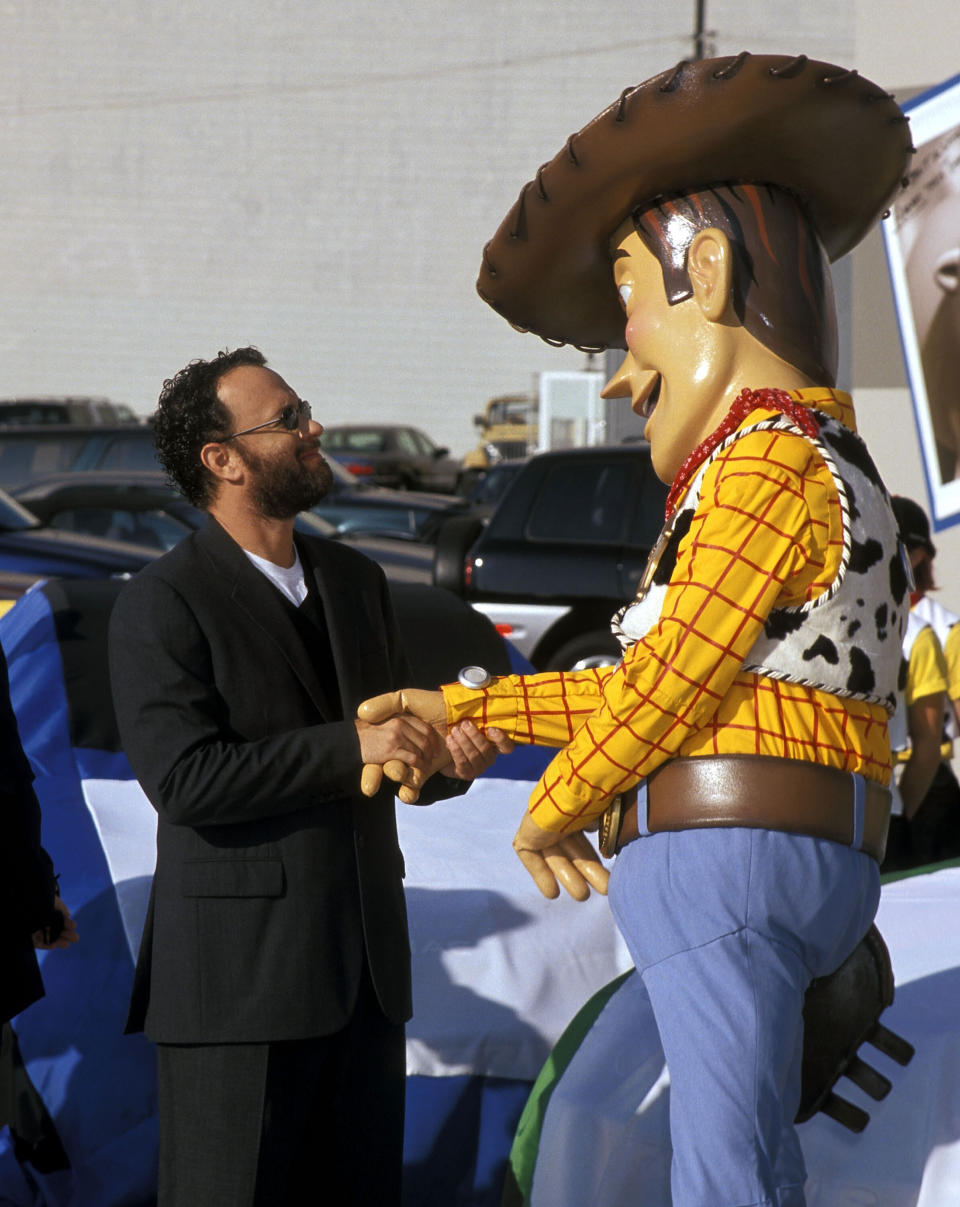
“You start going ‘well, when they're manufactured... when did Woody actually come to life? Was it in the box, when he was taken out of the box?’ And so we just kind of never go there.
“We just had the accepted rule is our toys are alive when we're not looking at them. And the question here is, well, what's a toy? You know?
“My kids poke the box more than the toy sometimes on Christmas: Is that a toy? Well, not really but it's a predicament of a toy. Like a toy would have to deal with that and so just all that stuff in a blender, kind of gave birth to Forky, and he became really narratively important to us.”
Other new toys introduced in the fourth film include Duke Caboom, Canada’s most famous stuntman voiced by Keanu Reeves, Ducky and Bunny, a pair of carnival prizes voiced by Keegan-Michael Key and Jordan Peele, and Gabby Gabby, a creepy forgotten doll, voiced by Christina Hendricks.
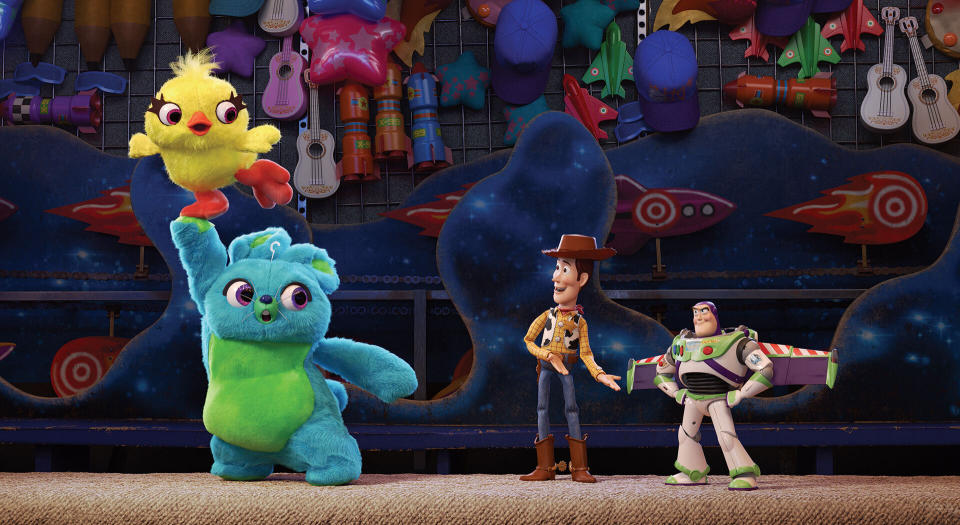
One thing that remains constant throughout all four films though is the visual language. Despite the increasingly sophisticated technology used to Pixar create them, all four films are recognisably of the same world.
Rivera says the visual formula of the Toy Story world is maintained by sticking to three simple rules.
Read more: Bo Peep gets a makeover for Toy Story 4
“Bob Pauley, who's the production designer, he so brilliantly simplified it down,” shares Rivera. “He worked on all the films, he designed Buzz Lightyear among other things, and he distilled it down into three things.
The shape language of things: So the shape language is a little bit of a caricature. So if you were to build a table, or a chair, it's a little bit round, it’s a little bit softer than it would be in the geometric reality of the world. So it's not razor sharp so you soften things, not cartoon town, but just a little soft.
The textures of things are real. The denim of Woody's jeans or the felt of Jessie's hats, you can reach out and touch it.
The lighting that you put on top of it is theatrical. So it's not practical lights in the room of the sun coming, although you imply that, there's a theatrics to the lighting, and those are the three ingredients that we have to maintain.
“The fidelity of the render can change, we can change things to make it look more real. But we need those three things to make sure that it bookends to the first ones. I thought that was a smart way to say it. So we that that became our mantra.”
Toy Story 4 comes to cinemas on 21 June.

 Yahoo Movies
Yahoo Movies 

